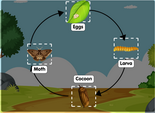Dinosaurs Science Activity for Kids
This science game will help children learn and practice facts about dinosaurs. Begin by reading all about the dinosaurs below before playing the game.
Did Dinosaurs have feathers?
Dinosaurs, which are known for their size and shape. They belong to the clade Dinosauria. Their appearance was first recorded in the Triassic Period (243 million to 233,3 million years ago). They are still being studied for their origin and evolution. However, it is certain that they ate leaves and ingested stones. They were also land-dwelling reptiles.
They were terrestrial reptiles.
Dinosaurs had long tails and clawed hands. They also had scaly skin. They could walk on one leg or four legs, and they all ate meat and plants. Experts believe that their upright posture and powerful weapons enabled them to survive despite their small size. Scientists aren't certain if dinosaurs lived alone or in groups.
Over 150 million years ago, Dinosaurs inhabited the Earth. They were the dominant animal on land during that time. While they are now extinct, certain species of dinosaurs lived in the world for a shorter time than others. For example, the Tyrannosaurus was an extinct species that had never seen the Stegosaurus and died out 80 million years later. The Apatosaurus (also known as the Brontosaurus) died more than 100 million years after Tyrannosaurus.
Land-dwelling reptiles were the earliest dinosaurs. Between 205 million and 65 million years old, they ruled the earth. This diversity allowed the evolution of many species including the Tyrannosaurus Rex. There were only three dinosaur species at the time. They were able to adapt to their environment and could eat a wide variety of plants.
They had feathers
While many people believe that feathers are only for birds, it is possible that feathers were also present in dinosaurs. Recent research from Bristol University has revealed that dinosaurs had feathers when they were adults. Researchers believe that feathers evolved independently from their skins, and may have helped in insulation. Researchers say their findings "seal" the deal on whether dinosaurs were equipped with feathers. Scientists will now use high-resolution, X-ray imaging in order to determine if dinosaurs had feathers.
The feathers of theropods or dinosaur birds were likely widespread across the entire dinosaur world. They were likely created as an insulation and signaling device, and then they became useful in flight. Most dinosaurs that had feathers likely had scaly skin. Some paleontologists believe that the feathers of juvenile Tyrannosaurus Rex were tufts. Also, fossil remains do not fully preserve the feathers of dinosaurs.
They ate leaves
Although there is no evidence that dinosaurs only ate leaves, it is highly probable that they also ate other plant materials. Dinosaurs likely ate leaves, twigs, seeds, and fruits, as well as bushes and trees. Some even had brains larger than birds. It is possible that dinosaurs ate plants as well as insects, although this is not confirmed.
Most dinosaurs were herbivores, meaning they didn't eat their food. Because of their long necks, they were able to swing their necks across large areas. This saves energy and effort. The jaw structure and plant-eating habits that sauropods have, along with their specific eating habits, are being explored by new studies. The majority of herbivorous dinosaurs ate plants. However, some had special teeth for cutting and grinding while others had strong teeth to chew tough leaves.
Although most dinosaur species were herbivores in their diets, approximately 45 percent were carnivores. From the fossilized remains of dinosaurs, it is possible to determine which plants were eaten by them. Some of these creatures ate fibrous plant matter in their stomachs. This is significant because the climate on the earth changed over time during the Mesozoic age. The Jurassic and Triassic periods had more plants and were therefore hotter than the Cretaceous. These periods had lower temperatures and more variety of plant life.
Stones were used to grind their food.
New research suggests that dinosaurs may have ingested rocks in order to grind their food rather than relying solely on their teeth. This new discovery could shed light on the question of dinosaur migration. The ancient stones discovered in Wyoming may have been swallowed long-necked dinosaurs that migrated hundreds of thousands of miles across North America. This fossil evidence suggests that dinosaurs also ingested modern bird food.
While some dinosaurs used their stomachs to grind food, others had more elaborate teeth and larger heads than modern species. In herbivorous sauropods, for example, microbes were used to digest plant matter. These animals also ingested stones to grind food. Because plant matter is more difficult than meat to digest, it was necessary for large numbers of microbes to make it digestible.
Increasing mineral intake has been linked to the dinosaurs' use of gastric stones to grind their food. Some fossils, however, have not been found to contain stones. The stone could have been swallowed by sauropods. They may also have been kept in the intestines because they were hard to break down.
They had long hind legs
It's a well-known fact dinosaurs had long hind legs. They evolved from people who could walk on only two legs. The muscles in the back limbs performed better at speed while the muscles in the front limbs were faster at grasping and weight-bearing. These limbs are mostly unutilized today as dinosaurs switched from quadrupedal to quadrupedal animals during the early Jurassic about 20 million years ago.
Some dinosaurs went back to walking on four legs at one point. The heavy plates and horns around their heads made it difficult for them balance upright. Adding weight to the front of the body could tip the animal over. Modern fast-moving mammals cannot stand upright. Their hind limbs had to be very strong and long.
This study sheds light on how the evolution of the sauropodomorph species occurred. While the first dinosaur line was able to walk on two feet, later evolution saw them walk on all fours. How did this happen? Researchers believe the trait was first discovered in proto-dinosaurs. The trait was passed on to their descendants by the long hind limbs of these animals, which allowed them to catch prey.
They had three more vertebrae in the hips of their reptiles than any other reptiles
Crocodilians' hips have more vertebrae than other reptiles, which means that their bodies are larger. New research shows that dinosaurs had three more vertebrae in the hips of their reptiles than other reptiles. This is a significant finding because it suggests that dinosaurs were bipedal, and had a larger pelvis. The hips had three additional vertebrae. They were located in both the pelvic or femur of phytosaurs (a type of Crocodylian).
While Seeley's theory may seem ironic, in that birds are considered dinosaurs, there is evidence that the birds were not bird-hipped. Ornithischian dinosaurs were, however, the closest to birds. Birds have a backward-oriented pubis bone, which makes them highly specialized saurischian dinos. Understanding how hips work is crucial to understanding dinosaurs.
The bodies of different dinosaur species had similar features. They had three vertebrae in their hips that were more than other reptiles. This allowed them to move around easily and efficiently. Their skulls were made from bone and cartilage which enabled them to move and breathe easily. Three pairs of vertebrae were also found in their hind limbs, which allowed them to balance their bodies.
They were huge
Several dinosaur groups had extremely large members. The Sauropoda was the largest land animal known to man and was a giant. Some dinosaurs weighed up to 100 tonnes, while others were only five to ten tons. The majority of land animals were smaller than these giants and the blue whale is dwarfed today by them. We still have fossils of dinosaurs that had enormous brains and huge bodies.
Dinosaurs were large and could maintain a constant body temperature. Endothermic dinosaurs allowed their bodies to slowly warm up and cool off. Many extinct groups also developed skeletal modifications that made it less suitable for flight. The idea that all dinosaurs are gigantic is based on preservation bias is incorrect. Large dinosaur fossils are more likely than smaller bones to survive fossilization.
Chicken-like carnivores were the smallest dinosaurs. They measured about one foot (30 cm) in length and weighed between five and six pounds (2.5 to three kg). The longest dinosaurs measured 80 feet (30 metres) in length and weighed eighty tons (73 metric tonnes). Their size was comparable to that of the blue whale (which can weigh up to 110 tonnes).
They were in a perfectly erect position.
Dinosaurus' posture was completely upright, which is quite different from modern reptiles or amphibians. Their limbs were bent at right angles and their femurs bent at an angle equivalent to an erect position. Archosaurs had to take a more upright position due to the high bending stress associated with this posture. As they grew in stature, this posture became more prominent. They may have evolved to a more upright position.
This was an essential part of dinosaur evolution. This allowed full-time bipedalism and freed the hands from grasping objects. This was a characteristic that dinosaurs shared with mammals, but later groups lost it. Mammals, however, remained in the undergrowth up to the K-T boundary. This unique physiology was achieved by a fully upright posture.
Are you interested in learning about dinosaurs? Then get ready to play a fun and exciting science game that will help you learn interesting facts about these fascinating creatures. The Dinosaurs Science Activity for Kids is an interactive way for children to learn about different types of dinosaurs and their characteristics. Before starting the game, children are encouraged to read a short passage about dinosaurs that provides an overview of their physical features and behaviors.
The game is designed to engage children's interest and help them develop important science skills such as observation, classification, and critical thinking. Through the game, children can identify and match different types of dinosaurs to their names and characteristics, as well as learn about their habitats, diets, and behaviors. As they play, children can also improve their reading comprehension, vocabulary, and memory skills.
Overall, the Dinosaurs Science Activity for Kids is an excellent educational tool that combines fun and learning, helping children to develop a love for science and a fascination with the prehistoric world of dinosaurs.











